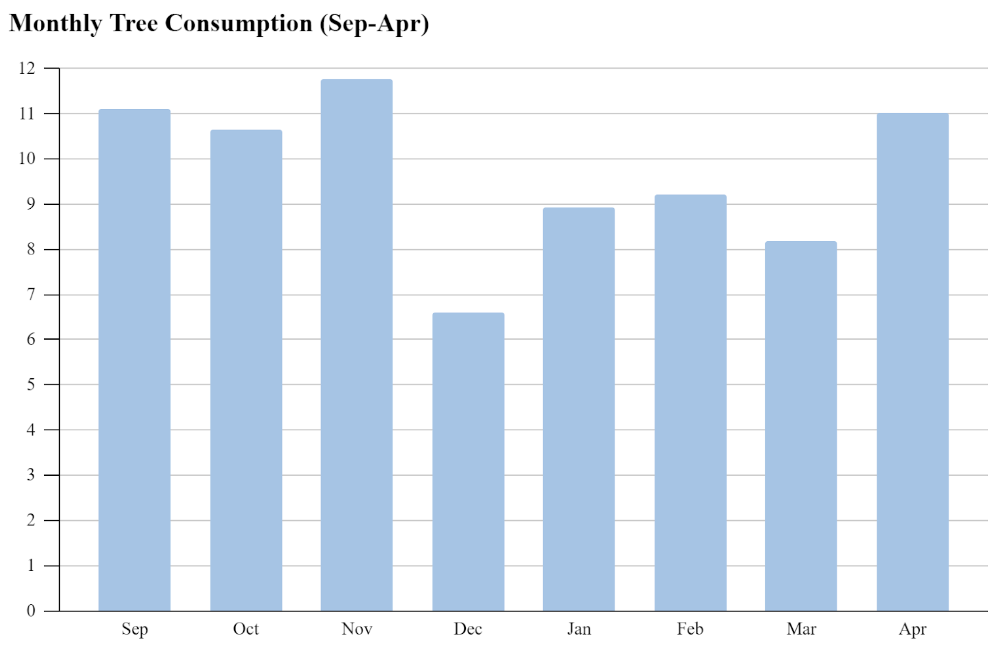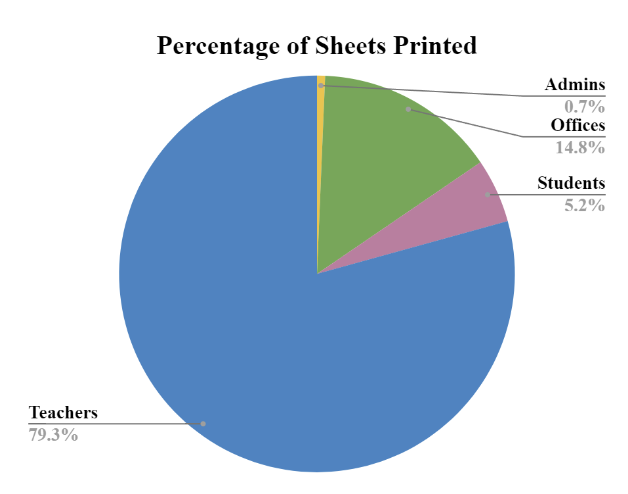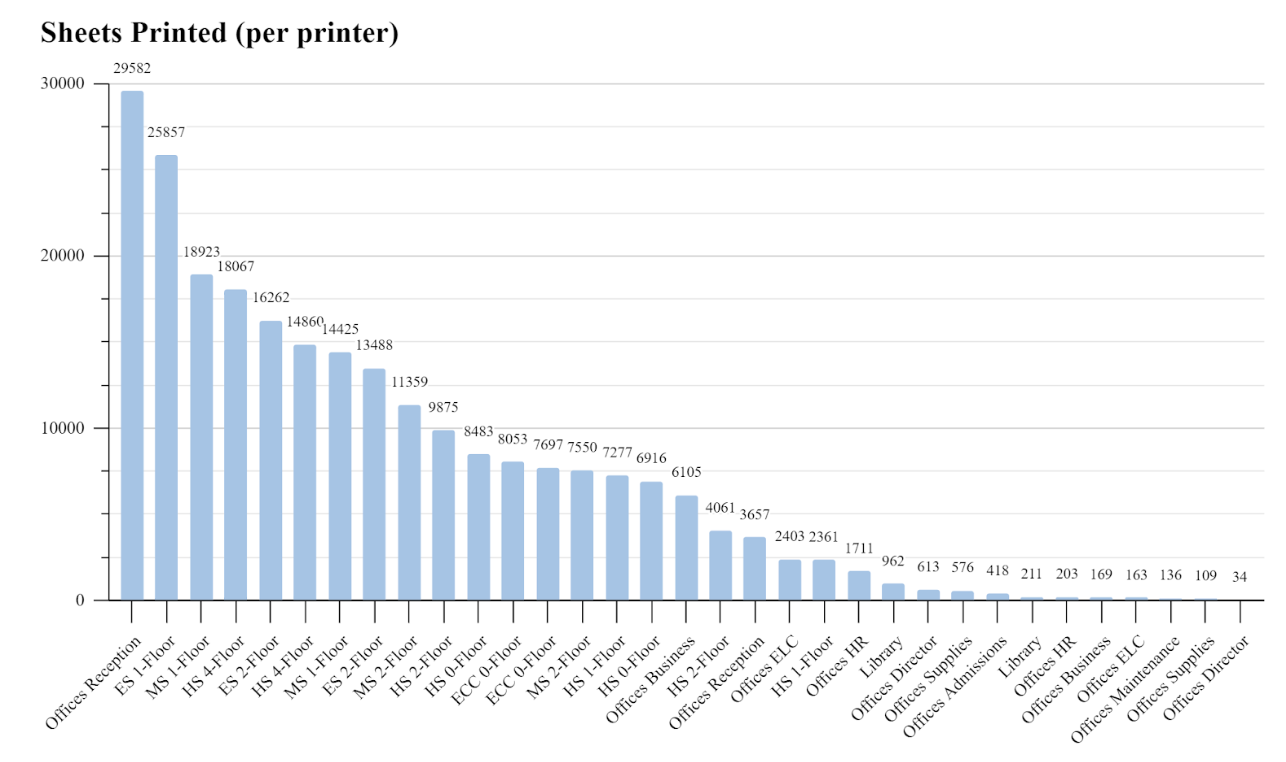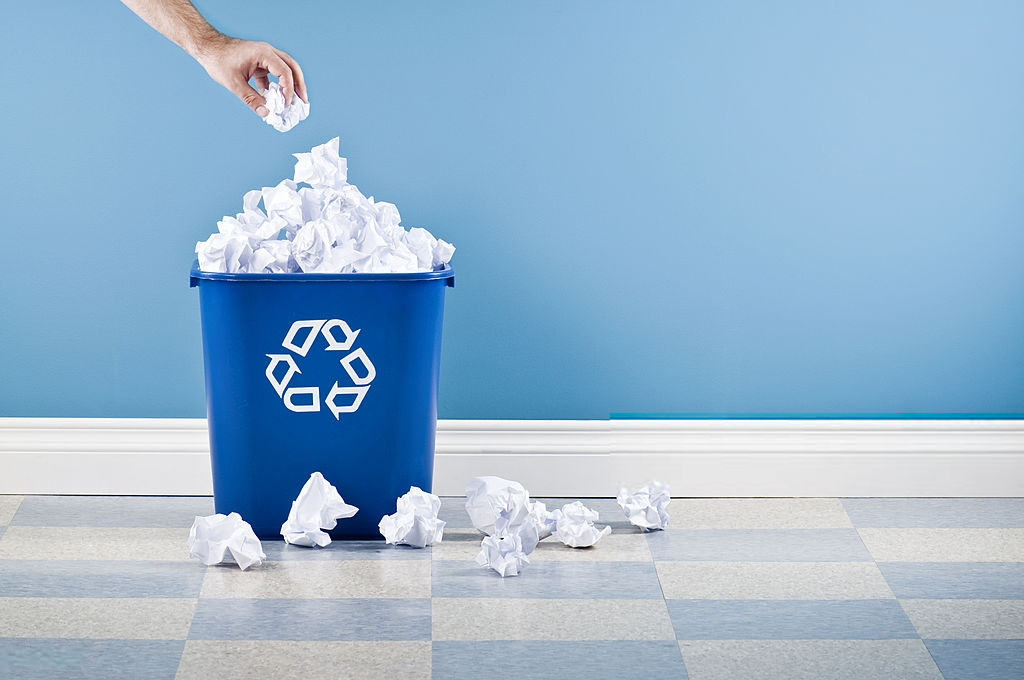Imagine the ASB football field covered in 77 lush green trees. Now, picture all of these trees being mercilessly torn down over the course of the school year to be used for paper. While we don’t actually cut down trees, ASB prints an average of more than 80,000 sheets of paper each month, which equates to 9.7 whole trees. This article will discuss sustainable paper usage throughout the school, as well as the question of why so much paper is still being used in a society that has become dominated by technology.
As demonstrated in the graph below, our school uses huge amounts of paper for printing. Whether it be worksheets, quizzes, or Math HL formula booklets, any given month sees between six and twelve trees’ worth of paper being used by the many printers placed around the school. To help you visualize this number, roughly 363 kilograms of paper are used every single month. As of April, a whopping 645,397 individual sheets of paper have been used for printing. Not even taking notebooks into account, this number gives a valuable insight into the true scale of paper usage at ASB.

Each of these A4 pages produces a significant amount of carbon dioxide, with average monthly emissions reaching 1024 kg of CO2. A single light bulb would need to be run for 7.3 years to be responsible for the same amount of carbon emissions. Now, all this paper consumption and its effect on the environment raises the question: do we even need so much paper in our school? With almost everyone having their own laptop, it seems obvious that paper use among students should start dwindling as they begin to use electronic devices as an alternative to pen and paper. To learn more about other students’ opinions, I asked some classmates for their opinions regarding their use of paper as opposed to computers.
Gabriella replied that “while pen and paper is good, because it helps me retain the notes in my memory, I like electronic devices because they better allow me to organize and store my notes, and I can access them more easily.” Seif said: “I like using paper because I can practice writing by hand for official IB exams,” quoting studies that show how writing on paper helps one retain more information. Gerard commented: “I prefer taking paper notes because it helps me stay focused on what I am learning. Because paper notes take longer, I need to think and understand what is going on and synthesize the most important aspects.”
While students’ opinions regarding use of paper as opposed to technology are mixed, it’s no surprise that the majority of printing is actually done by teachers and staff members. This result shows the reliance on paper as a material for teaching, one which is not easily replaced. Having a tangible sheet in front of you is often the most effective way of internalizing information. For some subjects, paper is especially important. I asked Ms. Ana, the art teacher, of her thoughts on paper use for art, and she said: “I don’t want to stop kids’ creativity by limiting their use of paper. What we really try to do is reuse and recycle paper as much as possible. We try to recycle, and keep everything, because it can be useful.”


Clearly, paper is an indispensable resource at ASB, and while we cannot get rid of it altogether, there are ways of reducing our consumption and impact on the environment. For example, we can use scrap paper. If you are just jotting down notes, rip a page out of your notebook or reuse a piece of paper, rather than taking a fresh sheet from the printer. Another key consideration is to recycle your paper. Why throw it in the trash when there are many blue paper recycling bins around the school? In the US, only around 53% of all paper is recycled (Schildgen). Recycling paper is easy and beneficial for the environment, and it should come without a second thought. And who can deny the beauty of an emerald green canopy providing shade as you study for your end-of-year finals?
(Thank you to Mr. Iverson and Ms. Kitch for providing the data.)
Works Cited:
- Schildgen, Bob. “How Much Paper Does One Tree Produce?” Sierra, 7 July 2014, www.sierraclub.org/sierra/2014-4-july-august/ask-mr-green/how-much-paper-does-one-tree-produce.

